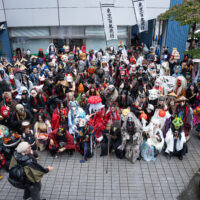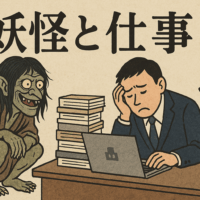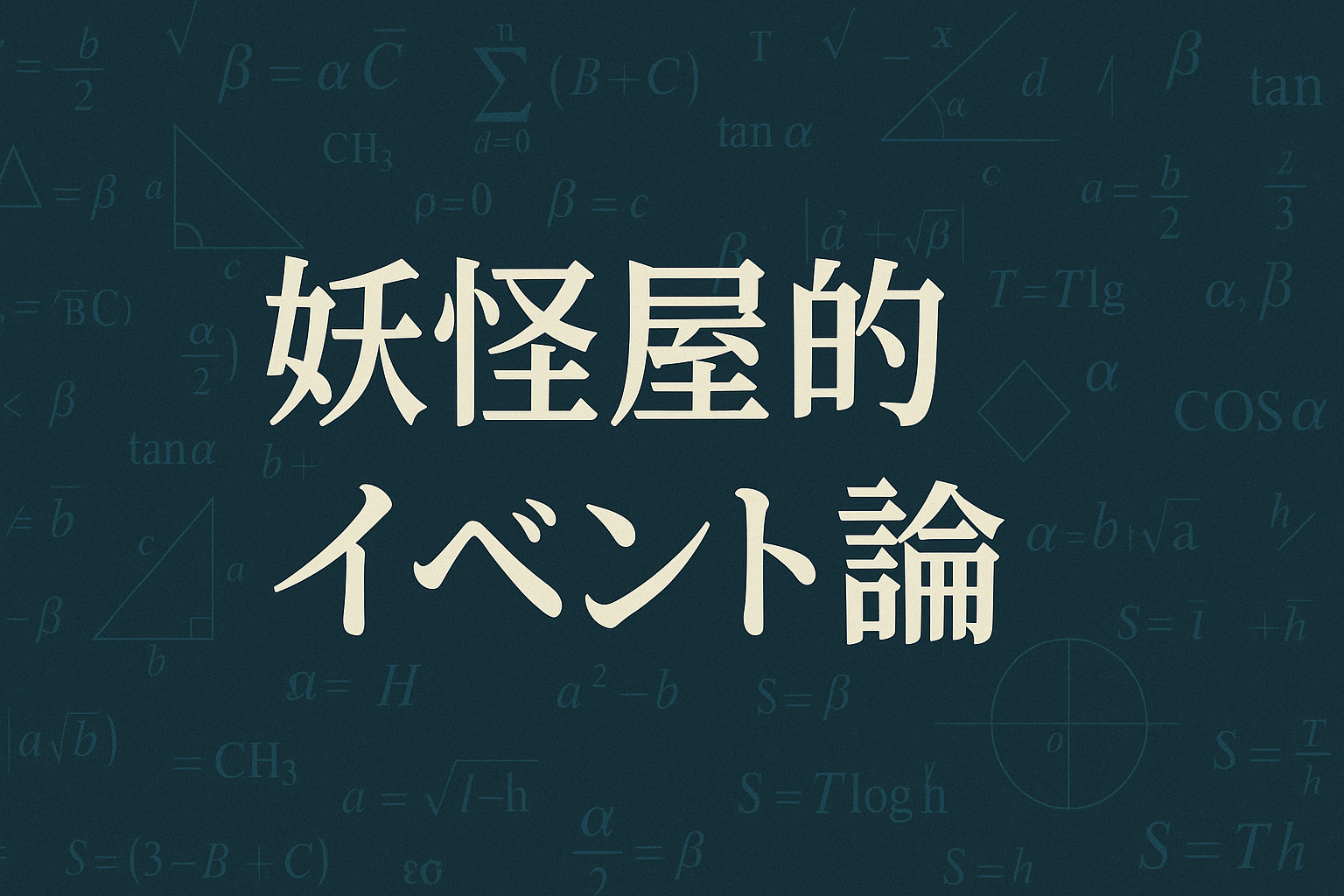
The Truth About Kappa
Kappa is a common monster, right?
Kappa sushi, kappa rolls, "Kappa no Kuu" and Hana Kappa... Kappa are often seen in modern life and are one of the most well-known yokai. If asked "What is the first yokai that comes to mind?", the kappa is probably the first name that comes to mind.
Moreover, unusually for a yokai, it does not have much of a bad image. Rather, it is treated as a familiar, somewhat lovable presence. However, did you know that there is a big gap between its well-known appearance and the actual legend?
This time, we will delve into the characteristics of kappa, local folklore, and theories about their "true identity."

From wiki: "Katsushika Hokusai painting, Kappa"
Characteristics and ecology of kappa
First, let's take a quick look at the characteristics of kappa that are commonly known.
- Lives in rivers and swamps
They may attack humans, cattle, and horses.
・Remove the anal balls
・Favorite food: cucumber
-It has a plate on its head, and loses its power when the water dries up
- Loves sumo (however, becomes weaker if the water from the dish is spilled during the bow before the match)
Often appears as a child
-There is a shell on the back
・I also like fish
・If they misbehave, they will regret it if you punish them, and they will help you cut grass or give you medicine.
...When you put it all together, it's a pretty unique and multifaceted yokai. However, because it caused harm to people and animals, it was also an object of fear, just like other yokai.
Areas where Kappa appear
Kappa folklore has spread throughout the country, with sightings and legends remaining in the following areas:
·Hokkaido
・Ibaraki (Ushiku Swamp)
・Kanagawa (Megujiri River)
・Gifu (Oono District)
・Okayama (Tsuyama)
・Hiroshima (Enko River)
・Kumamoto (Ato District)
・Fukuoka (Chikugo)
・Oita (Buzen)
・Nagasaki (Tsushima)
・Iwate (Tono)
Of course, this is not all. There may be some kind of "kappa legend" lurking around you.
You might even want to joke, "Huh? Maybe my dad is a kappa?"
Various names for kappa
Kappa are known by a wide variety of names depending on the region. It is probably rare for a monster to have such a wide range of names.
・Gawappa
・Gawowapa
Garappa
・Gaetaro
・Gataro
・Gartaro
・Kawawara (River baby)
・Cute and sexy
・Water snake (Mizuchi)
・Mendochi
・Medchi
・Dochigame
・Mintuchikamui
・Fuchizaru
・Monkey
・Shibaten
・Encode
・Gaoro
・Gongo
Kawako
Kawanomono
・Traveler
Gaul
・Kenmun
Given that there are so many different names for kappa, they may not simply be legendary creatures, but may be a part of local memory that has been passed down in stories from place to place over a long period of time.
What is the true identity of the Kappa?
Now, onto the main topic. In fact, there are several theories about the true identity of kappa.
- The drowned bodies of culled children
・Giant salamander theory
・Alien theory
・Monkeys playing at the waterside
・Ungirls Yamane's childhood theory (※This is a complete joke)
Among them, the one that stuck with me the most was the theory that the bodies of culled children were drowned in water. The following is a bit heavy, so please read with caution.
During the Edo period, people were so poor that they would dump their children in rivers to reduce the number of mouths to feed - a practice known as "incubation." As a result, the bodies of infants who had been drowned in the rivers
The skin was pale and greenish
・Her hair had been scraped off by the riverbed, making her head look like a plate.
・The expanded back looked like a shell
・The anus was expanded and it looked like the anal glands had been removed.
-The internal organs had leaked out and it looked hollow.
It is said that people called it "kappa" because it had these characteristics. It may have been a painful lie that parents told to keep other children from finding out the truth, and it was passed down in a different form as a yokai legend.
The difference between neglect and culling
In modern times, the act of parents abandoning their children would be severely criticized as "neglect." However, the situation regarding "infanticide" in the Edo period was very different.
Of course, neither of these actions are permissible in that they involve taking a life. However, if a parent swallows their tears and gives up their child out of the sad necessity of "surviving" or "protecting their family," and if this is an action taken while bearing the pain, then the story looks a little different.
Moreover, when I think about the feelings of the parents who, without letting the other children know the reality, explained that their son had been taken away by a kappa...I am at a loss for words.
What the Kappa Tells Us
Yokai are not simply "scary" or "mysterious" creatures, but are part of culture that reflects the historical background and human emotions. Like the kappa, it is not rare for the dark side of society and the pain of history to lurk behind their cute images.
Nevertheless, through yokai we can intuitively grasp the preciousness of life, coexistence with nature, and the depth of human suffering.
Even if it is a depressing story, there is great significance in passing it on to future generations. That is what I believe.
lastly
This time, the topic was a little heavy, but I hope that you learned more about the kappa monster. I encourage you to look for stories about kappa in your own local area.
Yokai are not just figments of the imagination. They are beings that speak to us, sometimes making us laugh, sometimes teaching us morals, and sometimes bringing us to tears.
Please review it and let us know if you have any requests for corrections or additions. We are also looking forward to your suggestions for the next theme.







SECRET: 0
PASS: 2992f93ac2779213d8a71840109a25d0
When I was in high school, I went to Tono to see kappa (?) ♪ I rented a bicycle and rode along the river looking for them, but I couldn't find any, probably because I didn't bring any cucumbers (._.)
The old lady at the guesthouse told me a Tono folk tale, which also featured kappa and other monsters.
Other than that I only have a vague idea of what it is, but it seems quite interesting so I'll take a look at it from time to time (o^^o)
If the child they gave birth to was disabled, they may have abandoned it in a river or somewhere similar.
But is that so? A mermaid has also been revealed in a reality video.
It's possible that they actually exist.
There is also a theory that kappa are missionaries who washed ashore.
- Caucasian, pale, even light green skin tone.
-The shaved head seen on Xavier's head.
-As is common among religious leaders, they are homosexuals and have sexual relations.
- The short cloak-like garment worn by priests is called kappa in Portuguese and cover in English.
Additionally, kappa legends are highly likely to occur in areas close to the sea.
I was very moved by the summary.
I have recently become interested in yokai and ethnology, but after reading this article I realized that it is not that I like yokai, but rather that I am attracted to the important things that can be conveyed through them.
I will be traveling to Tono City soon and am very grateful that I found out about this before then!
I want to bring some cucumbers
The true identity of kappa is immigrants who arrived in Kumamoto from the Yellow River basin in China around 300 AD.
probably
There are various theories about its true identity.
Maybe it’s multiple.
In the case of demons
In the ancient court
The hostile forces
To exterminate the demon
there is.